Tour of Niijima: Exploring Island Culture and Local Flavors
Dec 19,2024
Tour of Niijima: Exploring Island Culture and Local Flavors
Dec 19,2024
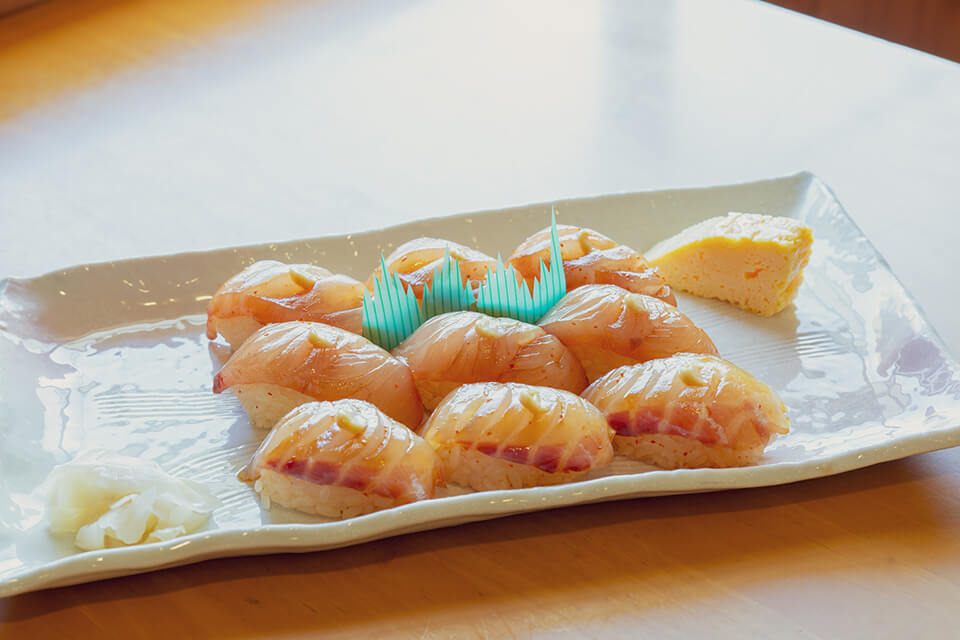

Located about 150 kilometers offshore from Tokyo and the fourth largest of the Izu Islands, Niijima Island is a charming place with beautiful nature and an original food culture. In this article, we chart out a one-night, two-day tour of the island during which you can enjoy the pure-white sandy beaches and magnificent ocean views while sampling Niijima’s local fare such as shimazushi — ‘island’ sushi that uses locally caught seasonal fish marinated in soy sauce, kusaya — salted, dried, and fermented fish noted for its pungency, and ashitaba herbs. Join us as we spend some time away from our ordinary routines and see what encounters we have.
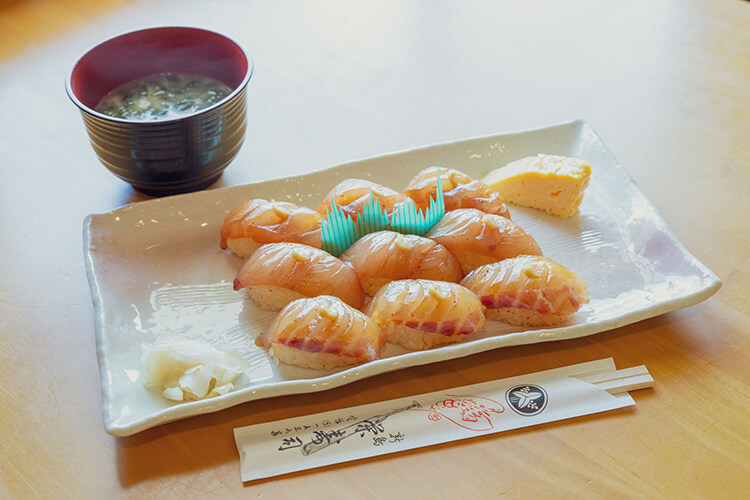
Sakaezushi serves fresh fish caught on the day. On our visit, three varieties of shimazushi were served: Japanese butterfish, greater amberjack, and red seabream.
Departing from Takeshiba Sanbashi Pier, the gateway to Tokyo, at just after 8 a.m., it takes about two hours and 20 minutes on the Tokai Kisen jet ferry to reach Niijima. In almost no time at all, you are on the island, where white sandy beaches and blue seas await. After the ferry ride, the first place you’ll want to head to is the legendary Sakaezushi restaurant in the center of the island. The restaurant is so popular that people line up in front before it opens. Everyone’s objective is the same: Niijima’s traditional shimazushi.
“We marinate seasonal fish caught in the surrounding waters — such as red seabream, Japanese butterfish, splendid alfonsino, and scombrops gilberti — in a soy sauce-based sauce, and serve them on sushi rice with Japanese mustard. Our specialty is that we add a dash of chili pepper to the sauce. On the other islands, you can find very spicy sauces that use island-grown chilies. We are particular about using only a dash of chili pepper to bring out more of the umami flavor and making the sauce mild enough that even kids can eat it.”
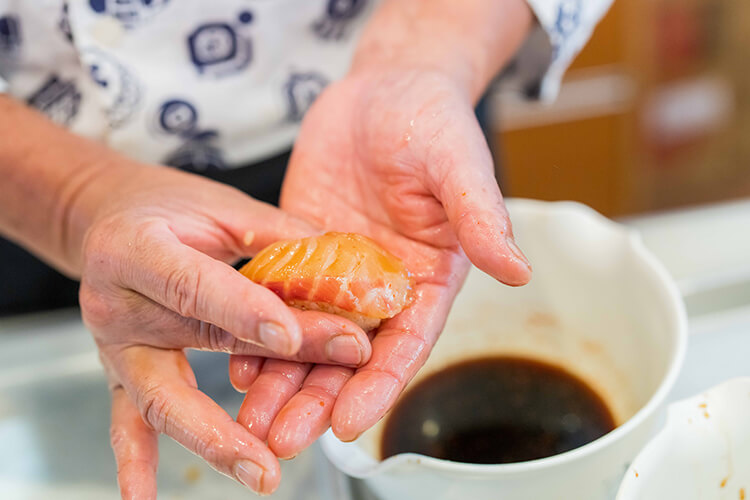
Forming sushi at the counter is Miyagawa Koichi. Born and raised on Niijima, he has been running the family business for 16 years as the second-generation owner.
Shimazushi is an important local delicacy for the islanders as well as visitors to the island. The specialty always appears on dining tables during every important event and ceremony on the island.
“Shimazushi was originally introduced by people from the Ogasawara Islands as a preserved food. For us islanders, it is an essential part of ceremonies and other important events. In the past, households would preserve the fish they caught in soy sauce and then eat it on top of white rice.”
Marinating the fish in the secret sauce enhances the fish’s plump texture and lends it a smoother mouthfeel than even sashimi. The unique flavor of the exquisite blend of the sauce’s chili pepper and the Japanese mustard’s tanginess is one you won’t forget once you’ve tried it, and it’s only available here. It’s no wonder so many people visit Niijima just to try shimazushi.
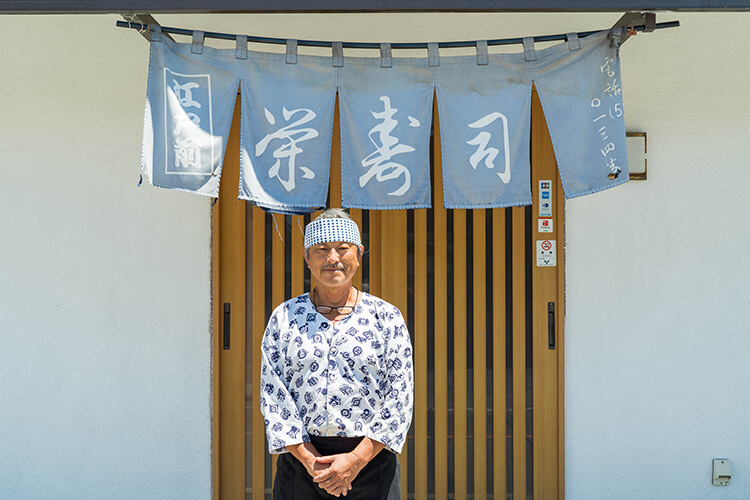
Miyagawa Koichi, born and raised on Niijima, is the second-generation owner of Sakaezushi, which has been in business on Niijima for 60 years
It is recommended to call in advance to confirm their hours when you plan to visit.

A photogenic vista stretches out before you. You may feel that you have wandered to the Mediterranean Sea.
Habushi Beach, which boasts the most beautiful view in the Izu Islands, is a white sandy beach that runs for about seven kilometers north to south. Blessed with great waves, the beach is treasured by surfers from all over the world. After passing through the landmark main gate, the tapestry of hues from the sand and sea that unfold before you is breathtaking.
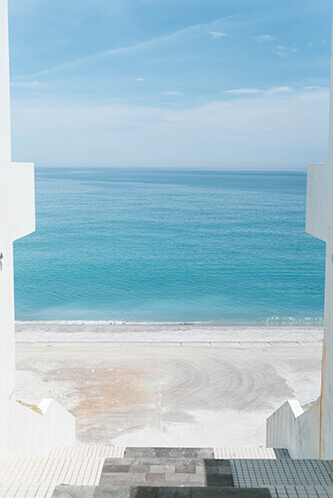
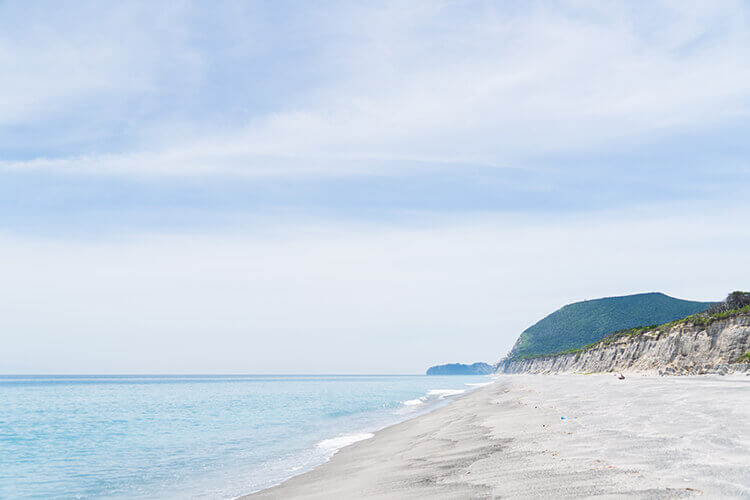
The sand gets its white color because the island is covered in white volcanic rock called rhyolite. This also gives the sea its surprisingly translucent milky-blue tint.
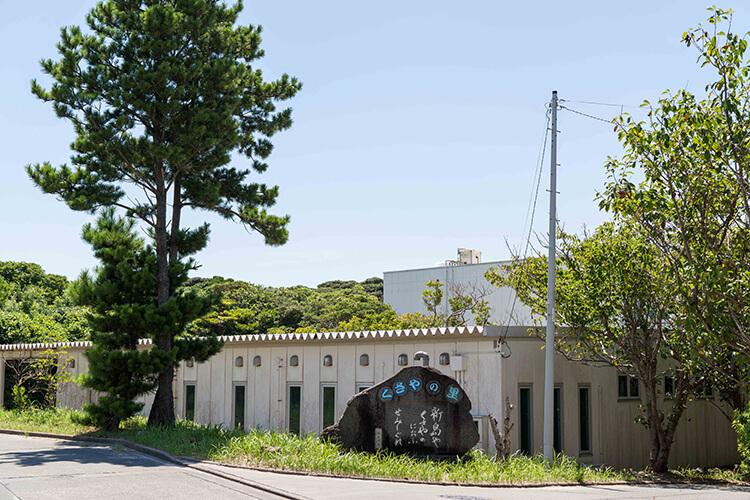
Kusaya no Sato, located behind Niijima Airport, is about five minutes away from Habushi Beach by car
Kusaya no Sato [Kusaya Village] is a facility designed to pass on Niijima’s tradition of producing kusaya to the next generation. If your timing is right, you may be able to observe kusaya production in progress. See for yourself the secrets to kusaya’s unmistakable aroma and exquisite taste.
Related article:Iketa Shoten — Passing On the 300-Year-Old Kusaya Tradition to the Next Generation
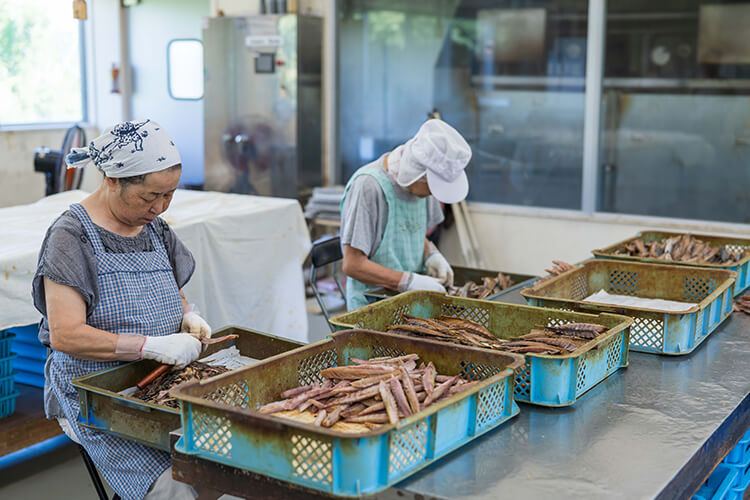
Workers put the finishing touches on kusaya. It’s clear that each fish is carefully prepared.
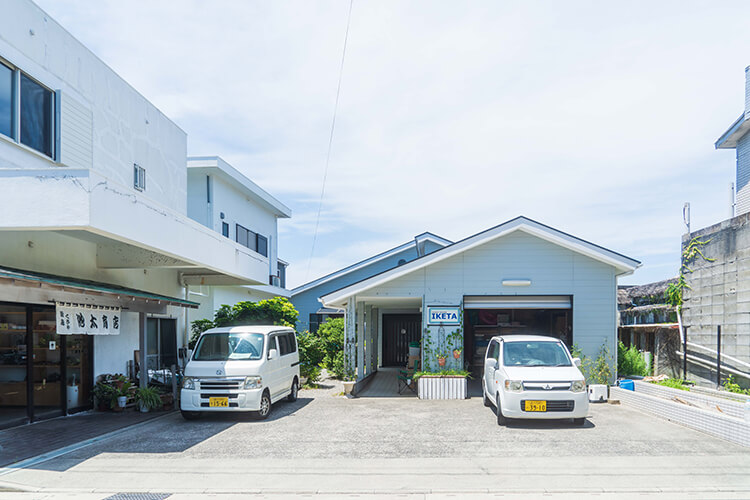
Iketa Shoten is located in the middle of the island, about a five-minute drive from Kusaya no Sato. The shop is on the left, and the guesthouse is on the right.
After learning about kusaya, it’s likely you want to actually taste some. Iketa Shoten offers kusaya prepared from various seasonal fish varieties as well as surimi fish paste, its signature pickled shiokara red squid innards, and many other processed food items made using local ingredients. It is the perfect spot to pick up some souvenirs.
Related article: Iketa Shoten — Passing On the 300-Year-Old Kusaya Tradition to the Next Generation
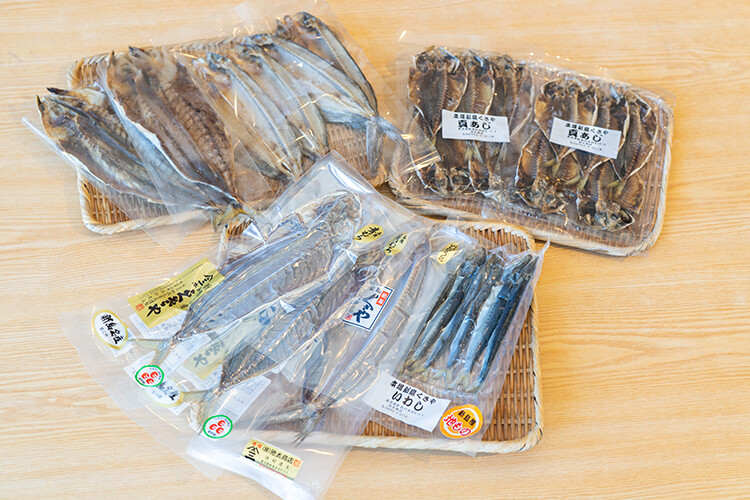
Products are sold in vacuum-sealed packages for easy transport home as souvenirs. The shop also ships products to regions across the country.
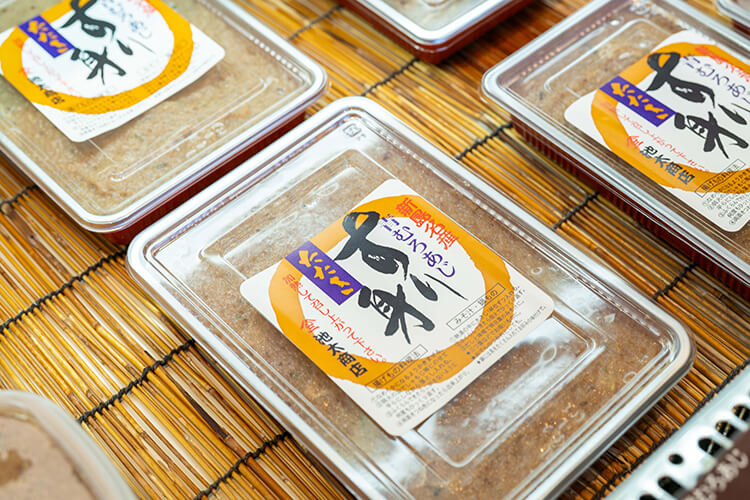
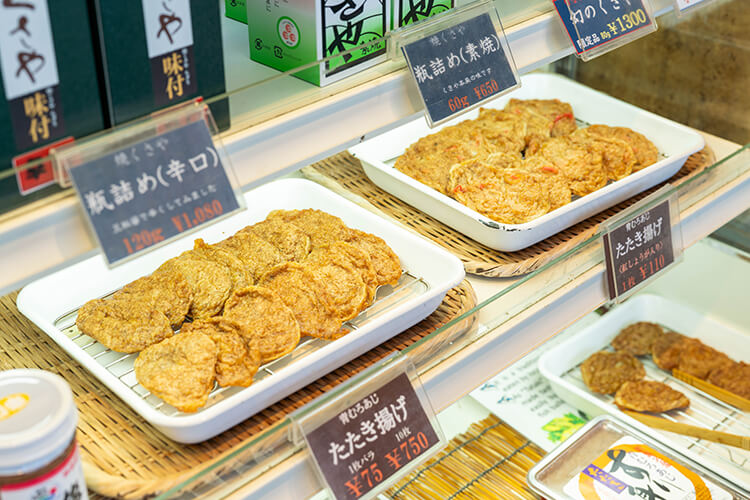
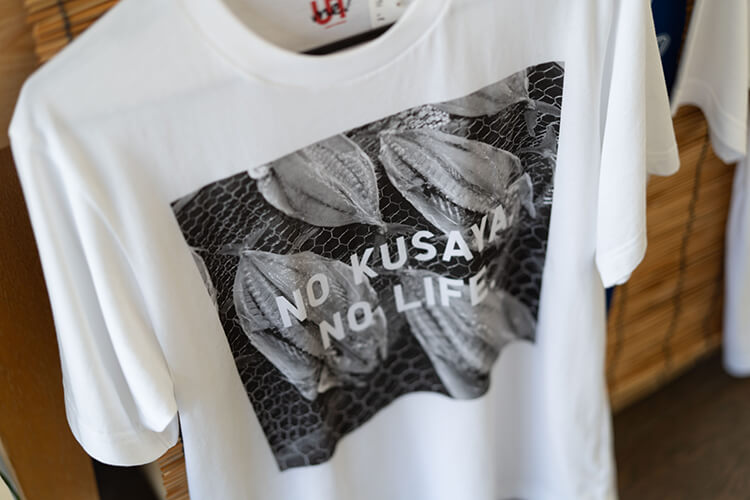
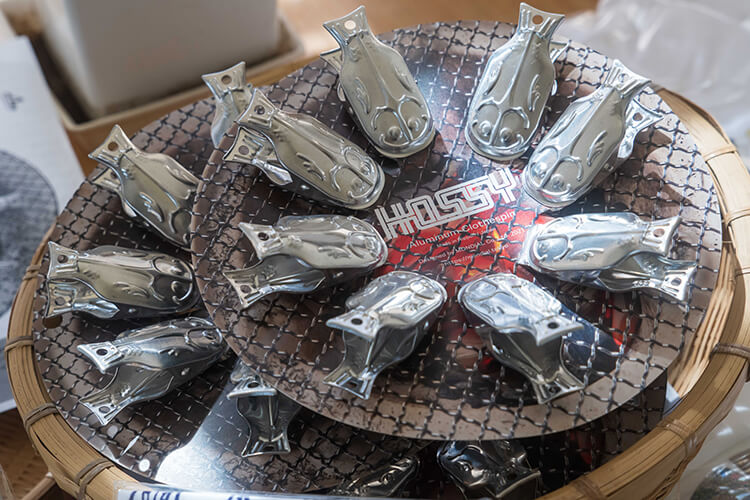
The shop’s fourth-generation owner, a former fishmonger, has a hand in crafting all the superb processed fish products . The shop also sells original kusaya novelty goods.
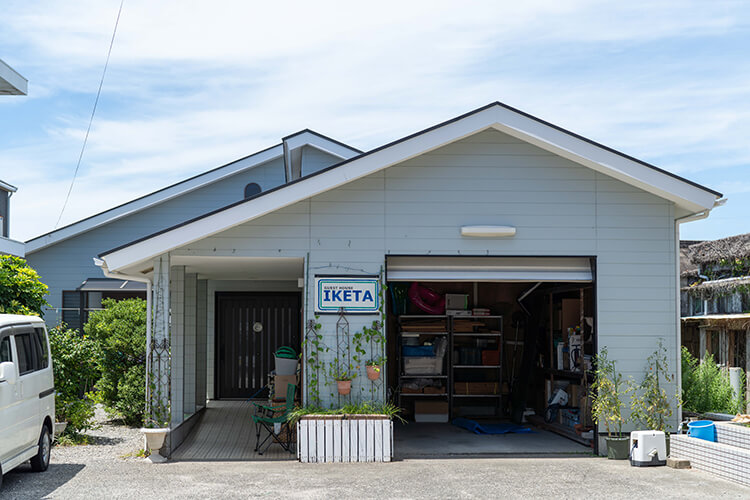
The owner operates a basic, accommodation-only guesthouse next door
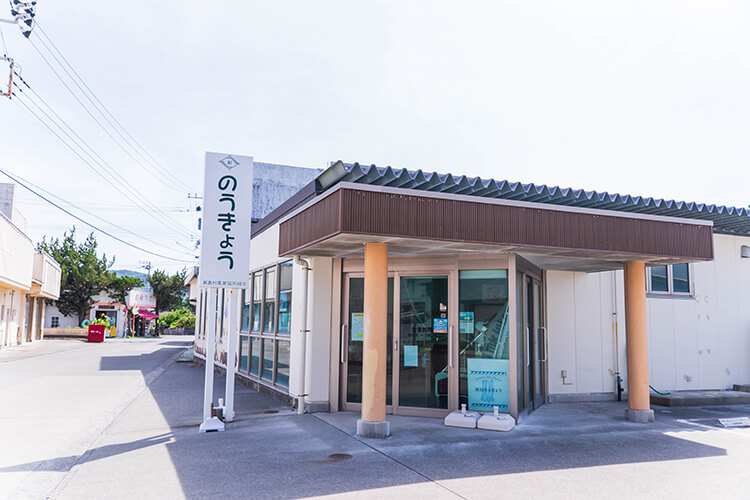
Niijima Noukyo is just a two-minute drive or a five-minute walk from Iketa Shoten
The islanders’ kitchen, Niijima Noukyo (Niijima Agriculture Cooperative) sells fresh seasonal vegetables harvested on the island, processed food items created by local farmers, and even shakes made from local vegetables available nowhere else. You have to try Niijima’s homegrown amerika-imo shakes and ashitaba shakes.
Related article: Island Vegetable Shakes and Other Delicious Discoveries at Niijima Noukyo
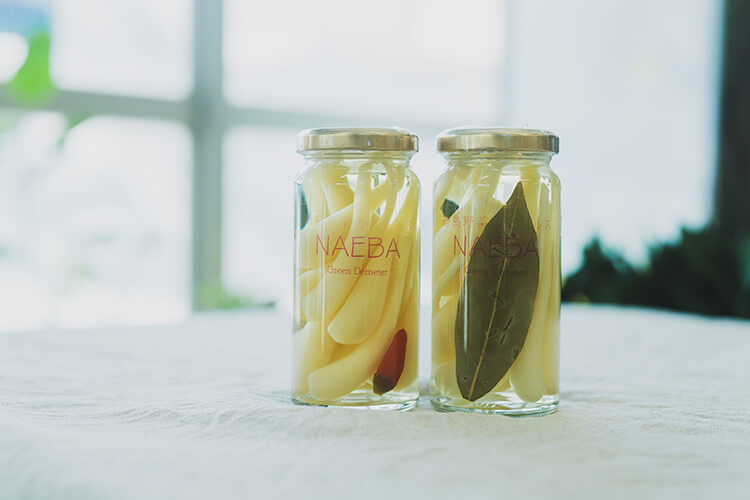
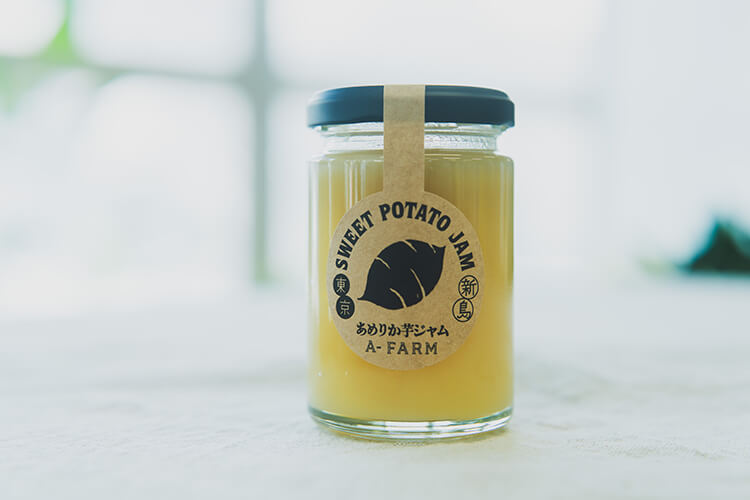
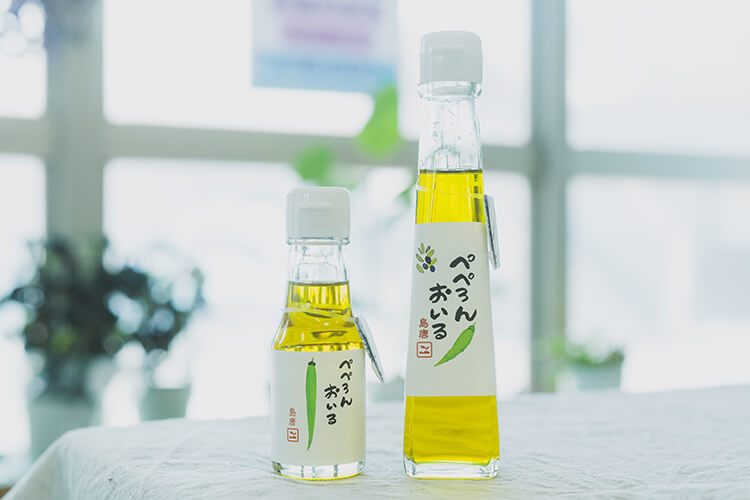
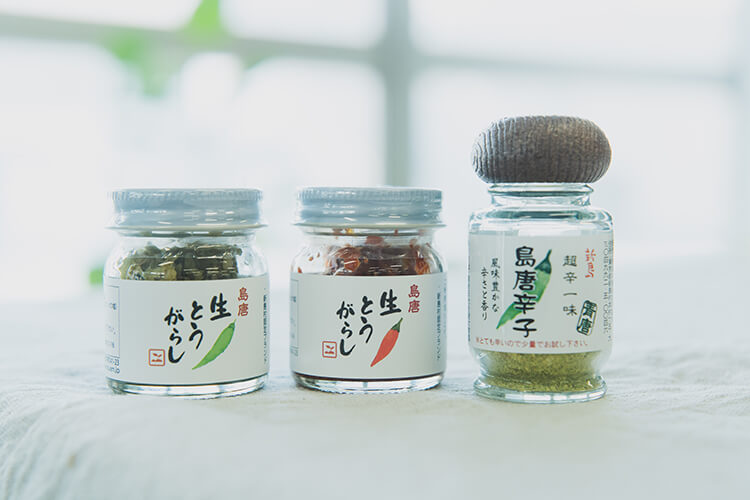
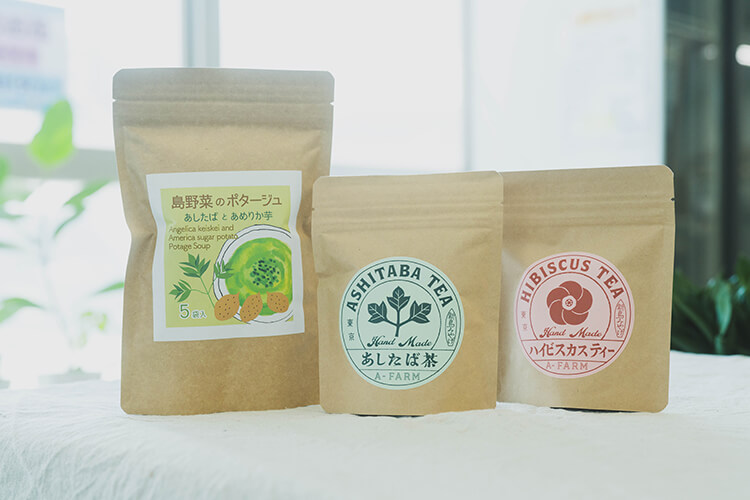
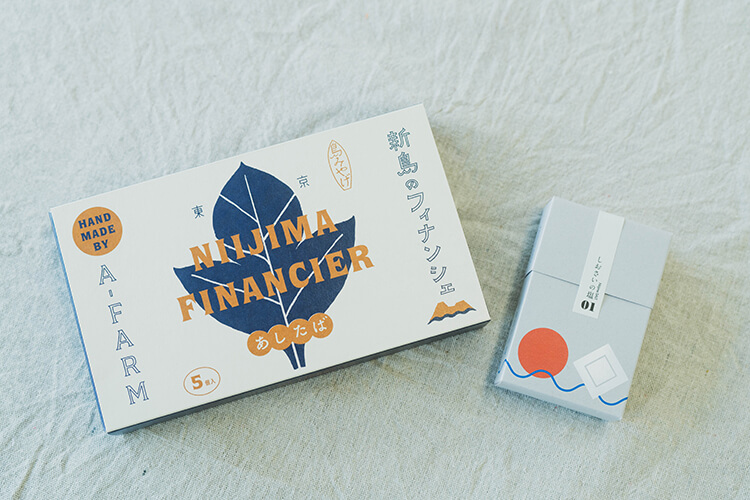
A variety of Niijima souvenirs found at Niijima Noukyo. All are produced by local farmers.
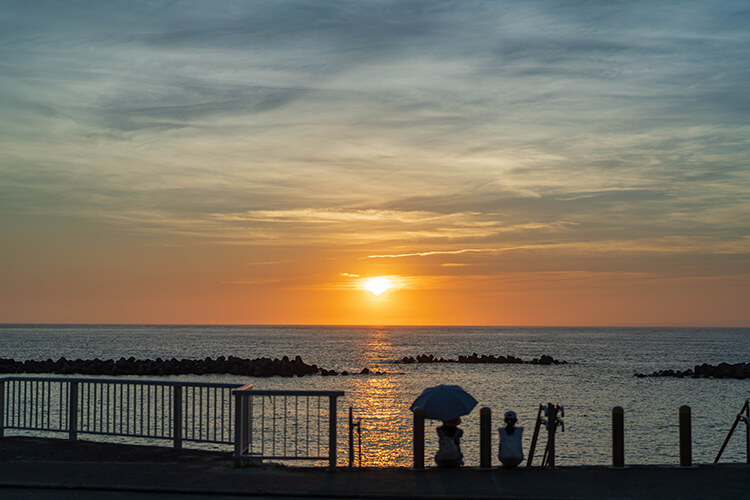
The sea behind Niijima Noukyo spreads out to the horizon. Indulge in a relaxing time watching the sun set over the sea.
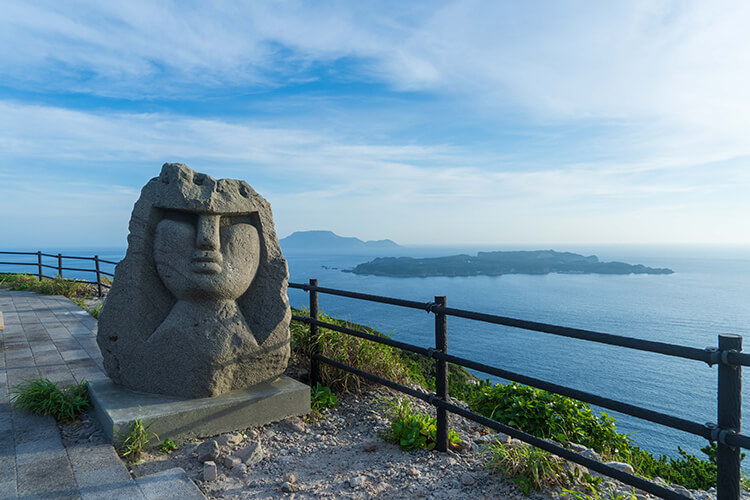
A moyai statue marks the top of the Ishiyama trekking course. Shikinejima is in the foreground, behind which lies Kozushima.
When you visit Niijima, you will soon notice the moyai statues that dot the island. Although modeled after the moai of Easter Island, they are made from kogaseki, a type of volcanic rock found only on Niijima. A tour was launched in 1977 for tourists to carve moyai statues, which led to them being placed all over the island. There are over 100 statues. The moyai statue in front of the Shibuya train station in Tokyo was created on Niijima during this time and was donated to Shibuya.
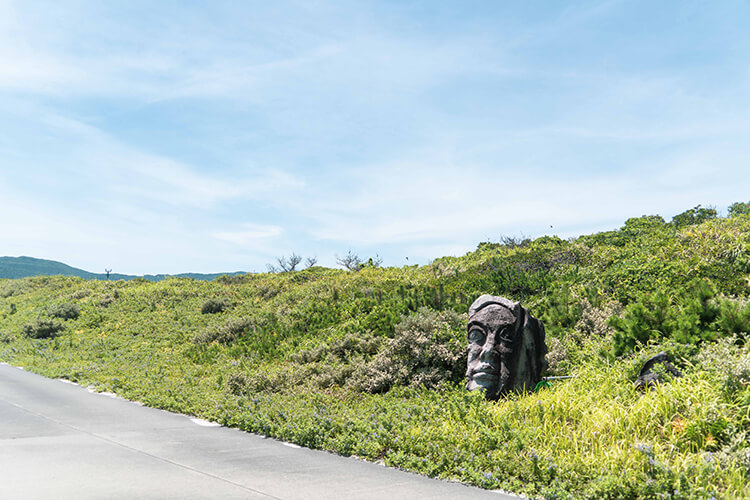
Even here you can find a moyai statue
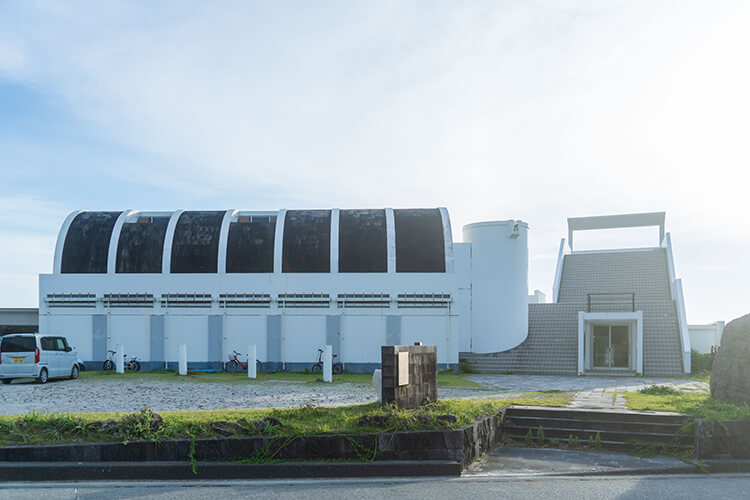
Perched along the coast, the Niijima Glass Art Center has a modern exterior. Climbing the stairs on the right brings you to an incredible view of the vast sea.
Unique in the world, the beauty of the deep olive green of Niijima glass, made from volcanic kogaseki rock, can be experienced first-hand at the Niijima Glass Art Center. You can also try your hand at decorating your own cup (drawing class) (advance booking required). Make a one-of-a-kind cup souvenir to remember your visit by.
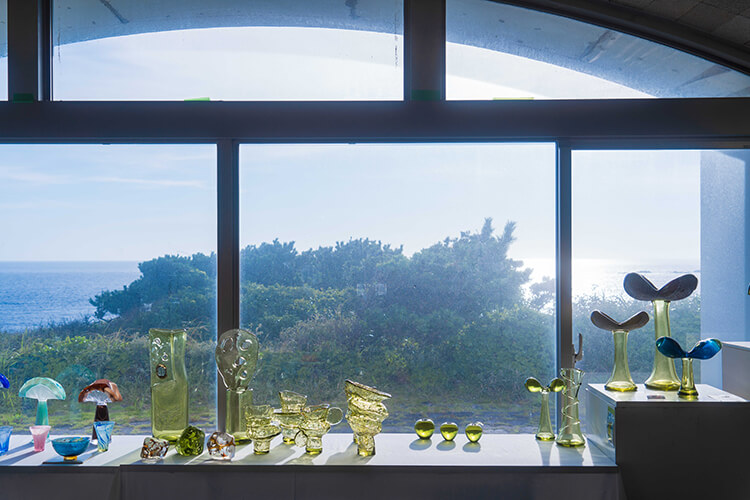
A display of various glassware designs at the Center
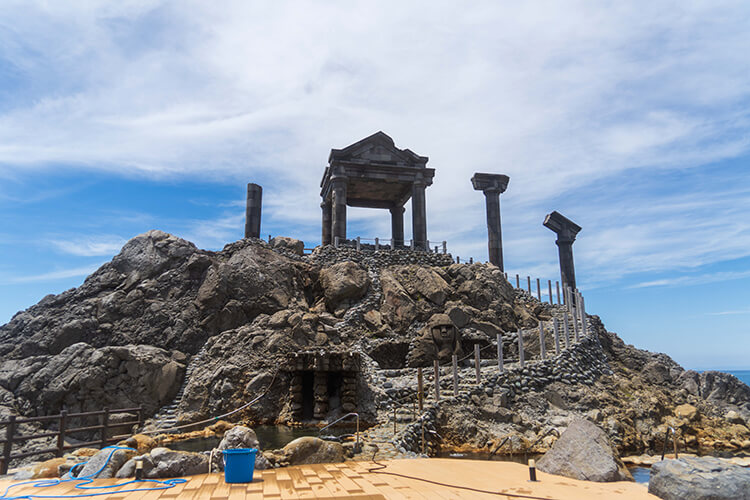
The ancient Greek-like columns and structures that stand out along the coastline mark the Yunohama Roten Onsen hot spring, which is constructed from Niijima’s distinctive kogaseki rock
There are three hot spring facilities on Niijima, but the most impressive is Yunohama Roten Onsen. Relax in a resort-like atmosphere at this swimwear-required hot spring.
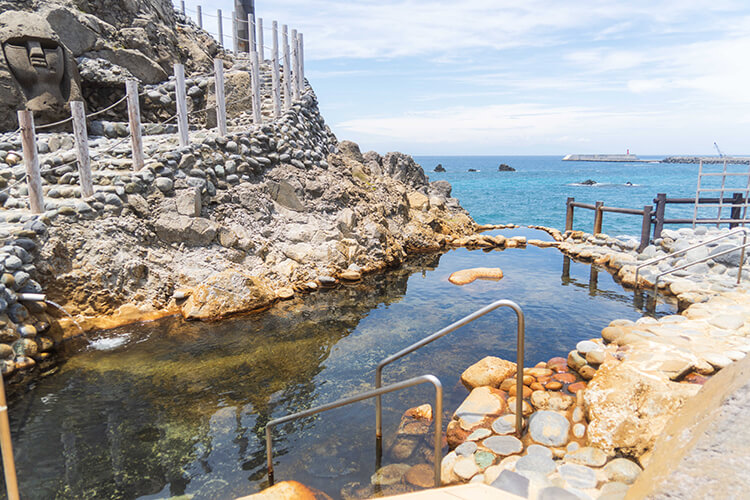
Since it is on the west side of the island, you can take in beautiful sunsets while soaking in the hot spring
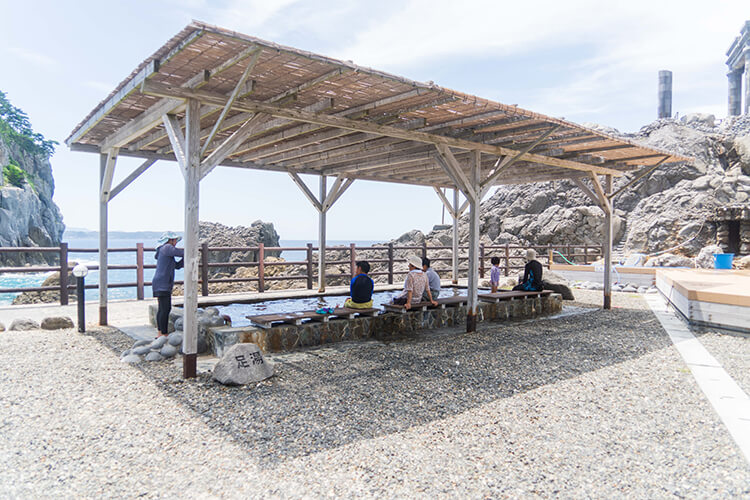
There is also a footbath, so if you are short on time, you can just dip your feet
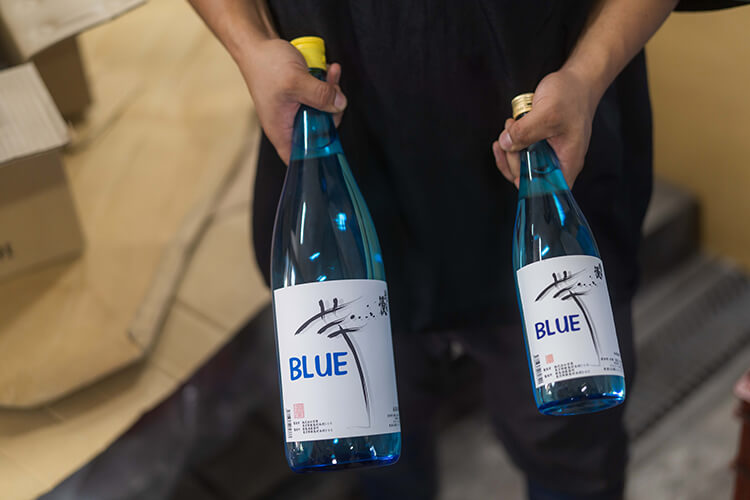
Niijima Distillery has added the new Blue series, made with a low-pressure distillation process, to its popular Shimajiman line of imo-jochu distilled alcohol spirits made from Beniharuka sweet potato. Blue offers a smoother, easier-to-drink experience.
Niijima Distillery, which will celebrate its 100th anniversary in 2026, is the only distillery on Niijima making “island” spirits. The distillery produces shochu distilled alcohol spirits loved by local residents and continues to incorporate new elements while preserving the island’s traditions. What makes the distillery’s shochu special is its easy drinkability that you can enjoy every day. At the distillery’s outlet, Liquor Store Miyahara, you just might pick up a rare bottle that you can’t find off the island.

Niijima Distillery’s flagship Shimajiman brand includes Habushiura, which is matured in oak barrels, giving it a refreshing mouthfeel
Experiencing Niijima’s abundant natural wonder and culture, as well as its numerous original tastes, makes for unforgettable memories. Any trip to Niijima is sure to be a special occasion and make you long to visit again.
Getting to Niijima takes two hours and 20 minutes by high-speed jet ferry or eight and a half hours by overnight ferry from Tokyo’s Takeshiba Sanbashi Pier. There are also ferry services from Kurihama Port in Kanagawa and Shimoda Port in Shizuoka.
Contact Tokai Kisen at 03-5472-9999 or 0570-005710
URL:https://www.tokaikisen.co.jp/